![]()
![]()
![]()
Use LEFT and RIGHT arrow keys to navigate between flashcards;
Use UP and DOWN arrow keys to flip the card;
H to show hint;
A reads text to speech;
16 Cards in this Set
- Front
- Back
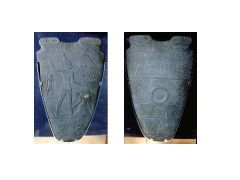
What, When,Where, Art Historical Significance?
|
Palette of King Narmer from Hierakonpolis, Egypt ca. 3,000-2,920 B.C.E. slate approximately 25 in. high
Narmer’s image and name appears on this ceremonial palette Elaborate formalized version of a utilitarian object. Used to prepare eye makeup Early evidence of the cannon to represent figures in Egyptian art. Heads of the goddess Hathor Label- Earliest existing labeled art work Horus, falcon god shows dominion over lower Egypt. |
|

|
First pyramid
Imhotep- royal builder for King Djoser 3rd dynasty Stepped pyramid Necropolis First really Royal Tomb Mastaba- each face oriented towards one of the cardinal compass points. Size= absolute and godlike power |
|
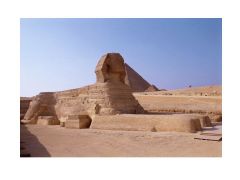
WWW AH S
|
Great Sphinx
Gizeh, Egypt ca. 2520-2494 B.C.E. sandstone, approximately 65 ft. high Carved from a spur in a rock formation Largest sculpture in the Near East Maybe the image of Khafre but possibly carved before his time Lion with Human head |
|
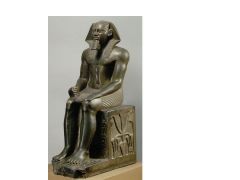
WWW SIG.
|
Khafre, from Gizeh, Egypt
ca. 2,520-2,494 B.C.E. diorite approximately 66 in. high Statues for eternity Served as abode for KA Diorite Lotus and papyrus symbolize a united Egypt. Horus extends his wings to protect the king |
|
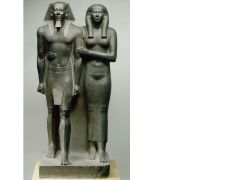
WWW SIG?
|
Menkaure and Khamerenebty
from Gizeh, Egypt ca. 2,490-2,472 B.C.E. approximately 54 1/2 in. high |
|
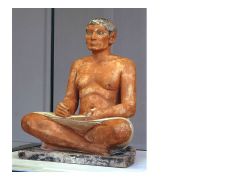
WWW SIG
|
Seated Scribe
from Saqqara, Egypt ca. 2,450-2,350 B.C.E. painted limestone approximately 21 in. high |
|
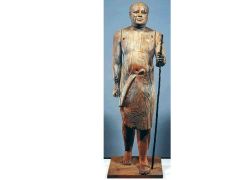
WWW SIG
|
Ka-Aper
from his mastaba at Saqqara, Egypt ca. 2,450-2,350 B.C.E. wood approximately 43 in. high Realism- relaxed informality Not idealized- non royal |
|
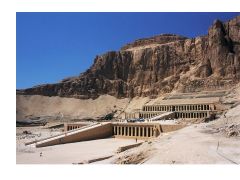
WWW SIG
|
Senmut
Mortuary Temple of Hatshepsut Deir el-Bahri, Egypt ca. 1,473-1,458 B.C.E.Female pharaoh “The woman who would be king” Fits into the natural setting. Levels were lush with frankincense trees and rare plants |
|
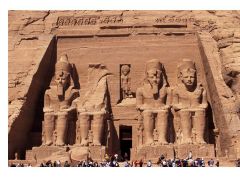
|
Temple of Ramses II
from Abu Simbel, Egypt ca. 1290-1224 B.C.E. colossi approximately 65 ft. high..Carved out of a cliff Rock cut temple Egypt’s last great Pharaoh Lack refinement of earlier works due to size |
|
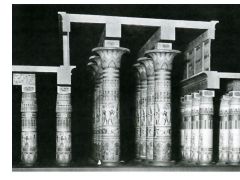
|
Model of Hypostyle hall Temple of Amen-Re
Karnak, Egypt, Dynasty XIX ca. 1290-1224 B.C.E. |
|
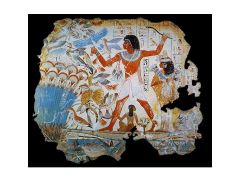
|
Fowling Scene
from the tomb of Nebamun, Thebes, Egypt ca. 1,400-1,350 B.C.E. fresco secco 32 in. high . New Kingdom painting a scribe and counter of grain is shown standing in his boat. He is enjoying recreation in his afterlife Figures are scaled according to their rank, |
|
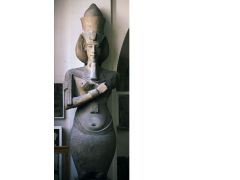
|
Akhenaton
from the temple of Amen-Re, Karnak, Egypt ca. 1,353-1,335 B.C.E. sandstone approximately 13 ft. high.. Amarna Period A religious revolution Amenhotep IV- Akhenaton Abandoned other gods to worship the sun god- ATON Moved the capital from Thebes to Aton where he built his own shrines He claimed himself to be the sole son and prophet of Aton New approach to representation |
|
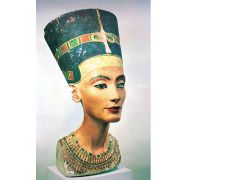
|
Thutmose
Nefertiti from Tell el-Amarna, Egypt ca. 1,353-1,335 B.C.E. painted limestone 20 in. high..Queen’s official sculptor The Beautiful One is Here |
|
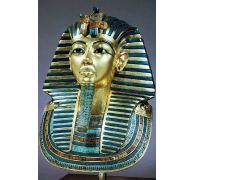
|
Death Mask of Tutankhamen
from Thebes, Egypt ca. 1,323 B.C.E. gold with semiprecious stones 21 1/4 in. high |
|
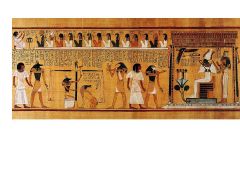
|
Last judgment of Hu-Nefer
from Thebes, Egypt ca. 1,290-1280 B.C.E. painted papyrus scroll 18 in. high |
|
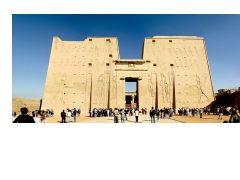
|
Temple of Horus
Edfu, Egypt ca. 237-47 B.C.E. |

